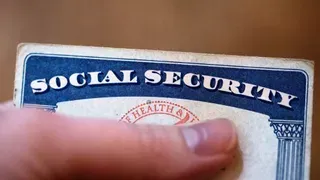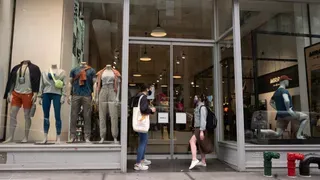August 30, 2015
CA Pushes Statewide AIDS Plan
Kilian Melloy READ TIME: 5 MIN.
California lawmakers want to create a statewide plan to end the transmission of HIV, following similar plans adopted in New York and Washington state as well as by San Francisco officials.
The Assembly Select Committee on Infectious Diseases in High Risk Disadvantaged Communities, chaired by Assemblyman Mike A. Gipson (D-Carson), is spearheading the effort. It kicked off the initiative by holding its first hearing in San Francisco Friday, August 21.
"President Obama released the National HIV/AIDS Strategy (in 2010), but California has no plan. That was the impetus," Gipson told the Bay Area Reporter in a brief interview prior to the start of last week's hearing. "I was surprised to learn that California has no plan. California normally leads the nation, and here, we are following other's leads."
Assemblyman Phil Ting (D-San Francisco), told the B.A.R. that ending the country's and the state's AIDS epidemic is achievable due to several new developments, such as the use of a once-a-day-pill to prevent HIV infections and the adoption of the "test and treat" policy that focuses on testing those most at risk for contracting the virus and encouraging those who are positive to immediately start on AIDS medications.
Both are key components of San Francisco's Getting to Zero plan, announced in late 2014, which has a goal of reducing new HIV infections by 90 percent come 2020. The city reported there were 302 new HIV infections last year, an 18.5 percent decrease from 371 in 2013, continuing a years-long decline in new infections.
"It is a great aspiration to shoot for ending AIDS," said Ting. "We need to put these aspirational goals out there."
Assemblyman Evan Low (D-Campbell), who is gay and in his early 30s, said during the hearing that it was particularly important for lawmakers to address the issue of AIDS at a time when the millennial generation - those people in their teens and 20s - often do not hear much discussion about HIV or AIDS any longer, despite there still being no cure.
"This is seen as an issue of the past. It is not talked about any longer," said Low. "Our job as legislators is to bring up these issues. I see this as an opportunity for us to lead. It is acceptable for us as lawmakers to ask what should we be doing as a state."
Dr. Karen Mark, chief of the state Office of AIDS in the California Department of Public Health, has been working to implement in California the national strategy for reducing HIV cases. Its targets include having at least 90 percent of those people living with HIV retained in care and at least 80 percent of people living with HIV to be virally suppressed, meaning their risk of transmitting the virus is close to zero.
In California, 45 percent of people living with HIV are virally suppressed.
"That is important for fighting new infections. If we could raise this to 100 percent, we could eliminate transmission of HIV in California," said Mark, a lesbian who was appointed to her position by Governor Jerry Brown in 2013 after having served as the interim state AIDS office chief for 16 months.
In an interview with the B.A.R. at the time, Mark said she would like to see HIV infections reduced 25 percent statewide by 2015. Two years ago it was estimated there were 5,000 new HIV infections in the state each year. Thus, under the targeted reduction, that number would drop to 3,750 this year.
The most recent year for statewide statistics, noted Mark during her presentation, is 2013, and California recorded 4,636 new HIV diagnoses, according to the national HIV Surveillance Report. Nationally, there were 41,287 new HIV diagnoses that year.
It put the state second, behind Florida with 5,200 cases, for having the most HIV diagnoses, accounting for 11.2 percent of all newly diagnosed HIV infections in the U.S.
"We've seen a steady decrease in infections," Mark told the lawmakers, pointing out that gay and bisexual men now account for nearly 70 percent of new HIV and AIDS cases in the state.
According to the statistical information she presented during the hearing, Mark also pointed out that Hispanics, at close to 41 percent, now account for the majority of new HIV and AIDS cases seen in California. Whites make up 30.4 percent, with African Americans accounting for close to 19 percent and Asians 6.2 percent.
And she stressed that many people with HIV or AIDS are living into their 40s, 50s, and 60s, complicating the sort of health care they require as they age.
"It makes their care much more complex," said Mark. "We are not just taking care of their HIV/AIDS, we are taking care of their co-morbidities that come with aging."
Barriers to Treatment
A wide array of local AIDS researchers and leaders of HIV agencies addressed the lawmakers at the hearing, placing particular focus on the various groups most at risk of contracting HIV and what barriers people face in accessing treatment.
"Everyone agrees there is great value to have a plan in California," said Project Inform Executive Director Dana Van Gorder.
As the legislators develop the statewide strategy, Van Gorder stressed that it not be called "a plan to end AIDS." Doing so, he said, would sound to people living with AIDS that the plan's goal is "to rid the world of them. That of course is not what we are proposing to do. We need to be careful what we call it so people feel good about it."
AIDS Legal Referral Panel Executive Director Bill Hirsh, who co-chairs San Francisco's HIV/AIDS Providers Network, told the B.A.R. that no plan to address HIV infections would be achievable unless it addresses the housing crisis many people living with HIV and AIDS are facing, particularly in the city and Bay Area at large, as housing costs across California surge.
"I think housing is a critical issue that has to be addressed in any plan that is going to talk about HIV," said Hirsh. "Housing is health care; housing is HIV prevention. If people do not have stable housing, it is really impossible to manage this epidemic."
Another key ingredient for a successful plan, pointed out Hirsh, is increased financial commitment from the state to end HIV transmissions and care for the people living with HIV and AIDS.
"I think it is great that the state is looking at this issue more closely," he said. "I wish the state had put more resources into fighting the epidemic over the years."
The lawmakers plan to hold their next hearing in Los Angeles in October. Additional hearings will be held in San Diego and Palm Springs before a final plan is submitted to lawmakers and the governor for review and adoption some time in 2016.
Kilian Melloy serves as EDGE Media Network's Associate Arts Editor and Staff Contributor. His professional memberships include the National Lesbian & Gay Journalists Association, the Boston Online Film Critics Association, The Gay and Lesbian Entertainment Critics Association, and the Boston Theater Critics Association's Elliot Norton Awards Committee.





